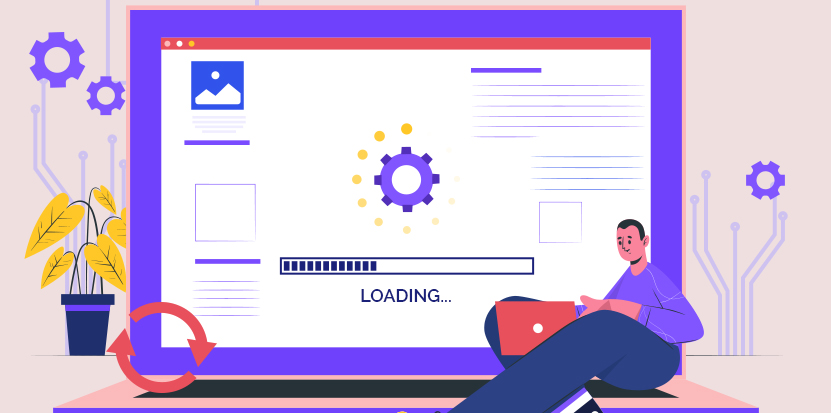 Lazy loading vs compression | If your WordPress site loads slowly, there’s a good chance that your images are part of the problem. In 2025, site speed is still one of the most critical ranking factors in Google’s algorithm, and poorly optimized images can hurt your SEO, user experience, and conversion rates. The good news? You can fix this without being a developer.
Lazy loading vs compression | If your WordPress site loads slowly, there’s a good chance that your images are part of the problem. In 2025, site speed is still one of the most critical ranking factors in Google’s algorithm, and poorly optimized images can hurt your SEO, user experience, and conversion rates. The good news? You can fix this without being a developer.
Two of the most effective image optimization strategies are lazy loading and compression. But which one should you prioritize? Or should you use both? In this guide, we’ll break down lazy loading vs compression, how they work, when to use them, and what other optimization tricks you can apply to make your WordPress site blazing fast.
Why image optimization matters for WordPress sites
Images are often the largest assets on a web page. If you upload high-resolution images without optimization, your site becomes bloated—leading to:
-
Slow loading times
-
Higher bounce rates
-
Poor Core Web Vitals scores
-
Lower Google rankings
-
Reduced conversions on mobile
Whether you’re running a blog, a store, or a content hub, optimizing images is non-negotiable in 2025.
What is lazy loading?
Lazy loading is a technique where images are only loaded when they enter the viewport (i.e., when the user scrolls to them). This dramatically reduces initial page load time and saves bandwidth.
Pros of lazy loading:
-
Faster initial page load
-
Saves server resources
-
Reduces total data loaded for users who don’t scroll
Cons:
-
May slightly delay image appearance
-
Can interfere with SEO if not implemented properly (especially with older plugins)
How to enable lazy loading in WordPress:
Since WordPress 5.5, lazy loading is built-in for most images. However, for more control and optimization, you can use plugins like:
-
a3 Lazy Load
-
WP Rocket (includes advanced lazy loading)
-
Autoptimize
Most of these plugins allow you to lazy load not just images, but also videos and iframes.
What is image compression?
Image compression reduces the file size of an image without significantly compromising quality. There are two types:
-
Lossy Compression: Removes data to reduce size (some quality loss)
-
Lossless Compression: Optimizes without quality loss (smaller reductions)
Pros of compression:
-
Greatly reduces file sizes
-
Works across all devices and screen sizes
-
Doesn’t affect how images are rendered
Cons:
-
May reduce image clarity if overly aggressive
-
Needs to be applied either during upload or via bulk optimization
Best compression plugins for WordPress:
-
Smush
-
ShortPixel
-
Imagify
-
TinyPNG for WordPress
These plugins allow you to automatically compress images on upload, bulk optimize your media library, and even convert formats like PNG to WebP.
Lazy loading vs compression: which one should you use?
Use both.
Lazy loading and compression solve different problems:
| Strategy | Goal | Best For |
|---|---|---|
| Lazy Loading | Reduce initial page load | Long-form content, blogs, eCommerce |
| Compression | Reduce file size | All images, site-wide performance |
Together, they create a faster and more efficient WordPress site that meets modern web performance standards.
Other image optimization tricks for WordPress (2025)
Here are some extra tips to make your site even faster:
✅ Convert Images to WebP or AVIF
Modern formats like WebP and AVIF offer better compression than JPEG or PNG with minimal quality loss. Most compression plugins now support this conversion.
✅ Use a CDN (Content Delivery Network)
A CDN like Cloudflare, BunnyCDN, or Jetpack CDN can deliver your images faster by caching them on servers around the world.
✅ Set correct dimensions
Use the width and height attributes in image tags. This helps browsers reserve space and improves CLS (Cumulative Layout Shift) in Core Web Vitals.
✅ Serve responsive Images
Use srcset attributes to serve different image sizes for different screen resolutions. WordPress automatically does this, but it helps to use themes that support it properly.
✅ Defer offscreen Images
This works similarly to lazy loading but can be customized for even more control.
FAQs
Is lazy loading enough for image optimization?
No. While it helps with perceived performance, you should still compress your images to reduce total page weight.
Will compression reduce image quality?
Not significantly if done right. Use tools that offer a balance between file size and visual clarity.
What is the best plugin for lazy loading and compression in one?
Plugins like WP Rocket or Smush Pro offer both lazy loading and compression features in one package.
Can image optimization improve SEO?
Absolutely. Faster loading times, better Core Web Vitals, and mobile performance all contribute to higher Google rankings.
Conclusion
In the lazy loading vs compression debate, the winner is clear: use both.
By combining these techniques with modern file formats, responsive images, and a solid CDN, you can significantly boost your WordPress site’s speed and SEO performance.
Want to automate SEO-optimized content creation and improve performance?
Check out NexoWrite — the AI-powered WordPress plugin that creates high-quality blog posts, handles meta descriptions, compresses images, and even integrates lazy loading. One plugin. Zero coding. Maximum results.
👉 Try NexoWrite today and supercharge your WordPress blog in 2025.

